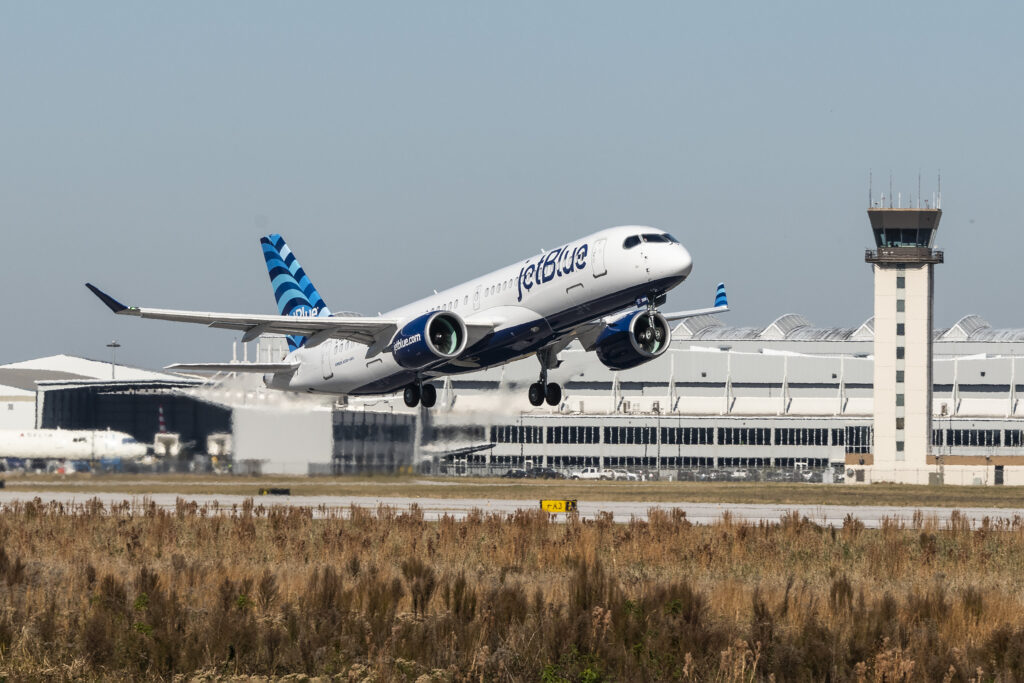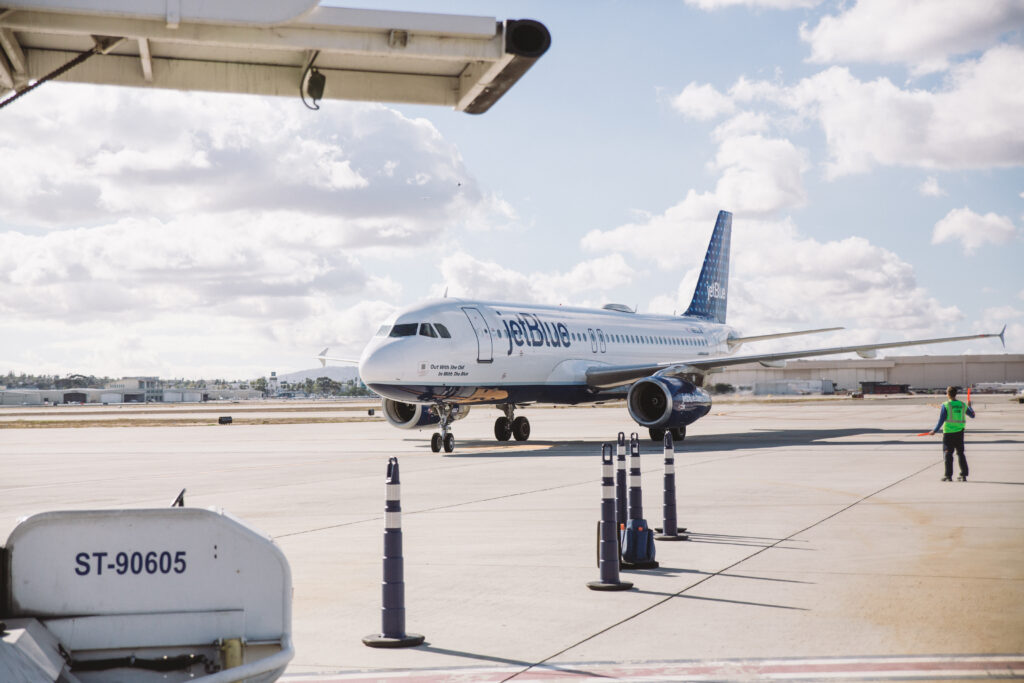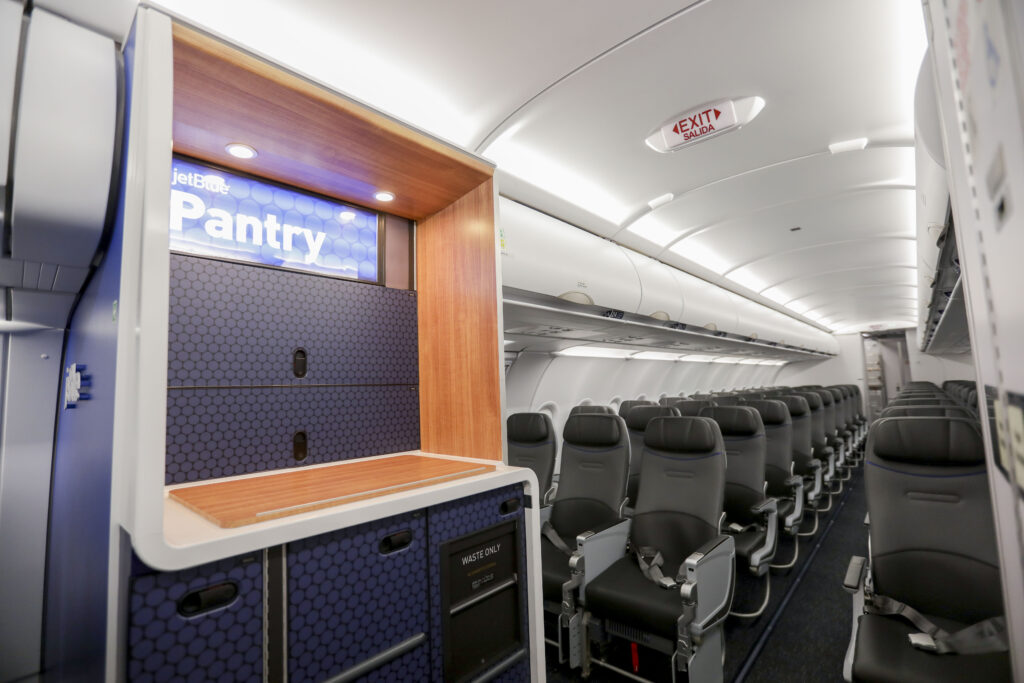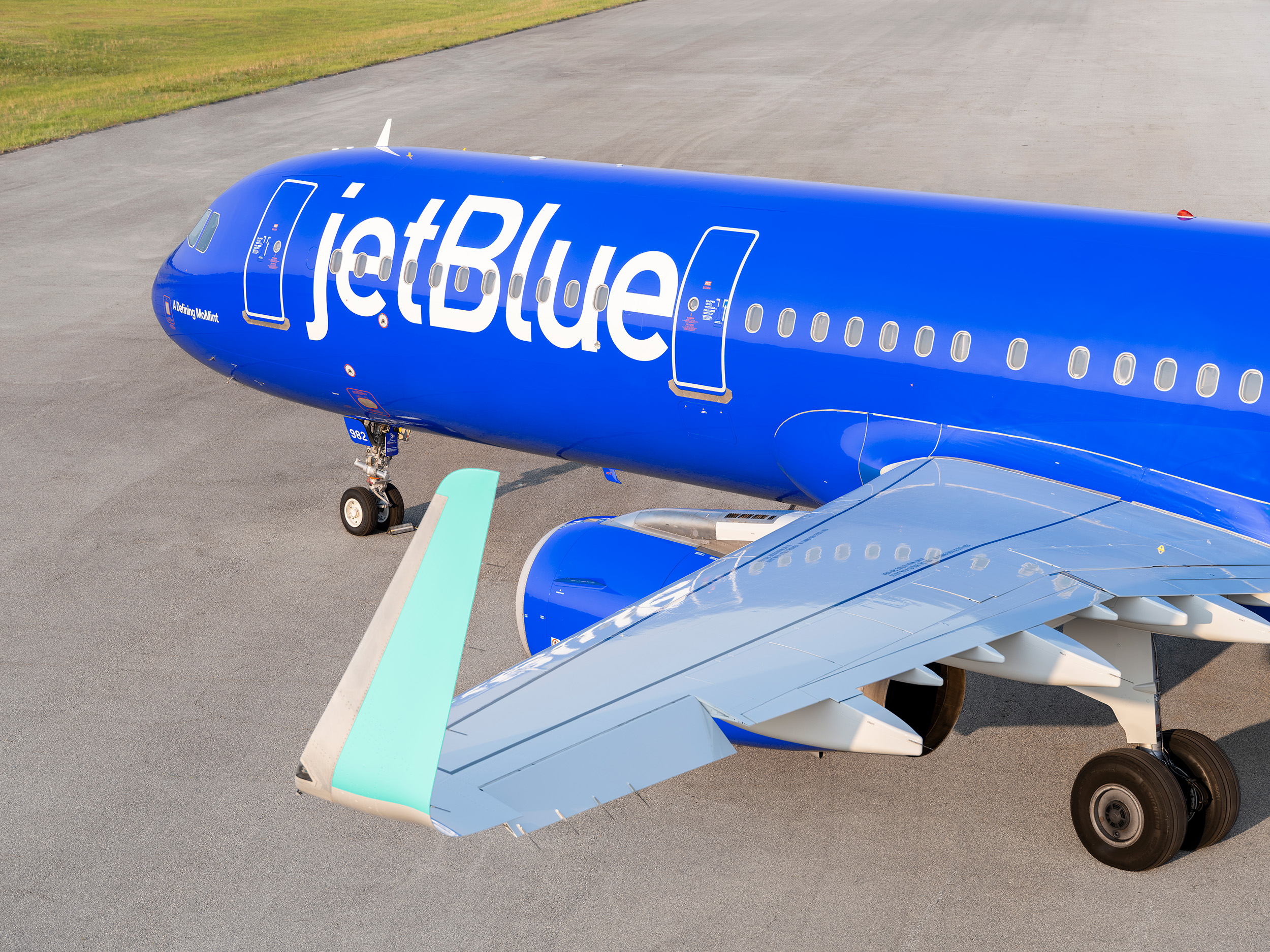JetBlue has recently announced a significant change in its network by eliminating five cities from its schedule and cutting another 16 routes. This move aims to refocus the airline’s schedule on better-performing routes to improve on-time performance and return to profitability.
As per the airline’s statement, the four destinations that will be eliminated from the schedule include Kansas City and three cities in South America— Bogota, Quito, and Lima, effective June 13.
Additionally, the route to New York’s Stewart International Airport, suspended during the pandemic, is being cut.

Photo: Courtesy of JetBlue
The carrier also plans to scale back services at Los Angeles International Airport (LAX) from 34 daily departures to 24. This is in addition to cutting eight routes from LAX, including routes to Cancun, Las Vegas, Miami, Puerto Vallarta, Reno, San Francisco, Seattle, and Liberia, Costa Rica. Instead, JetBlue will be refocusing its capacity on more profitable transcontinental and Mint routes.
JetBlue will also discontinue services to eight destinations from Fort Lauderdale (FLL) airport. Along with three South American destinations, JetBlue will also stop services to Atlanta, Austin, Nashville, New Orleans, and Salt Lake City. However, the airline will increase the frequency of flights to other destinations in the Northeast and the Caribbean that perform better.
Other city pairs scheduled to be cut include New York’s JFK to Detroit, Orlando to Salt Lake City, and Tampa to Aguadilla, Puerto Rico. The reductions come on top of cuts announced at the beginning of the year.
Doing More with Less
“With less aircraft time available and the need to improve our financial performance, more than ever, every route has to earn its right to stay in the network,” Dave Jehn, VP of network planning and airline partnerships, wrote in a memo to the airline’s employees.
JetBlue’s network reshuffling comes as the airline struggles to shed unprofitable routes and cut costs in the wake of two Department of Justice lawsuits and a shortage of aircraft.

Photo: Courtesy of JetBlue
Last year, the courts ended the tie-up between JetBlue and American Airlines in the so-called Northeast Alliance, prompting the carrier to rethink its East Coast strategy. Then, in January, another judge blocked the airline’s bid to take over low-cost competitor Spirit Airlines, which had a knock-on effect on the carrier’s LAX plans.
“We were counting on the merger with Spirit and the NEA to help us be relevant and support growth,” Jehn wrote in the memo. He added that changes in travel patterns post-pandemic have also contributed to the carrier’s underperformance.
Adding to JetBlue’s woes, several Airbus A320neos have been grounded due to a potential fault in its Pratt & Whitney geared turbofan jet engines. So far, seven aircraft have been pulled from JetBlue’s fleet, and reportedly that number could rise to as many as 15 by the end of the year.
Nonetheless, Joanna Geraghty, named JetBlue’s CEO last month, told analysts during the fourth quarter earnings call in January that it would not be “business as usual” now that she’s taken the helm.
The airline, she said, is ready to take “aggressive action to get back to profitability.” She said that the current route restructuring and careful deployment of limited capacity to those proven leisure and VFR (visiting friends and relatives) markets where the carrier is strongest is part of the strategy.

Photo: Courtesy of JetBlue
Other steps include revenue initiatives expected to contribute $300 million to the carrier’s top line and defer $2.5 billion of planned aircraft deliveries.
Furthermore, since JetBlue consistently ranks near the bottom of major US carriers in on-time performance, Geraghty said an underlying goal is boosting the airline’s execution. That, she says, is key to cutting costs and improving the brand’s reputation.
“As we operate in one of the most complex and challenging air spaces, operational reliability is foundational to all of our priorities, helping us deliver a better customer experience while also improving revenues,” Geraghty told analysts.
The schedule changes and cost-cutting measures follow the announcement in February by activist investor Carl Icahn that he had taken a 9.9 percent stake in the airline and gained two seats on the JetBlue board. Icahn reportedly believed the airline’s shares were “undervalued and represented an attractive investment opportunity.”




